
Relative clauses defining and nondefining TestEnglish
May 2, 2013 -. Generally, there are two types of relative clauses: restrictive and non-restrictive relative clauses. Restrictive relative clauses are also called defining relative clauses. Non-restrictive relative clauses are also called non-defining relative clauses. In both restrictive and non-restrictive relative clauses, the relative.
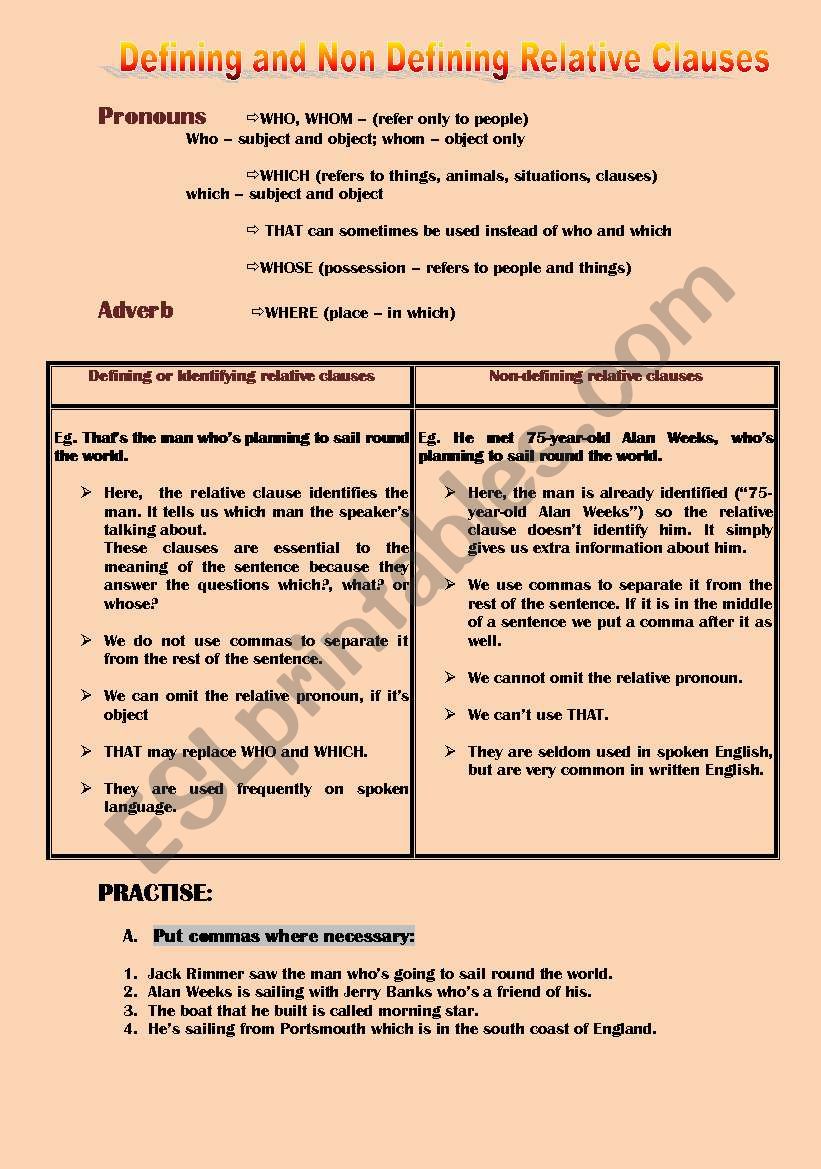
Defining and non Defining Relative Clauses ESL worksheet by elisamedeiros
14-17 Downloads: 3076 DEFINING & NON-DEFINING RELATIVE CLAUSES Level: intermediate 14-17 Level: Defining and Non-defining Relative Clauses Decide whether there must be commas (,) in the blanks or not 1. This swimming pool is for people_ who can't swim very well. commas no commas 2. Martha_ who is a very good student_ won first prize in Maths.
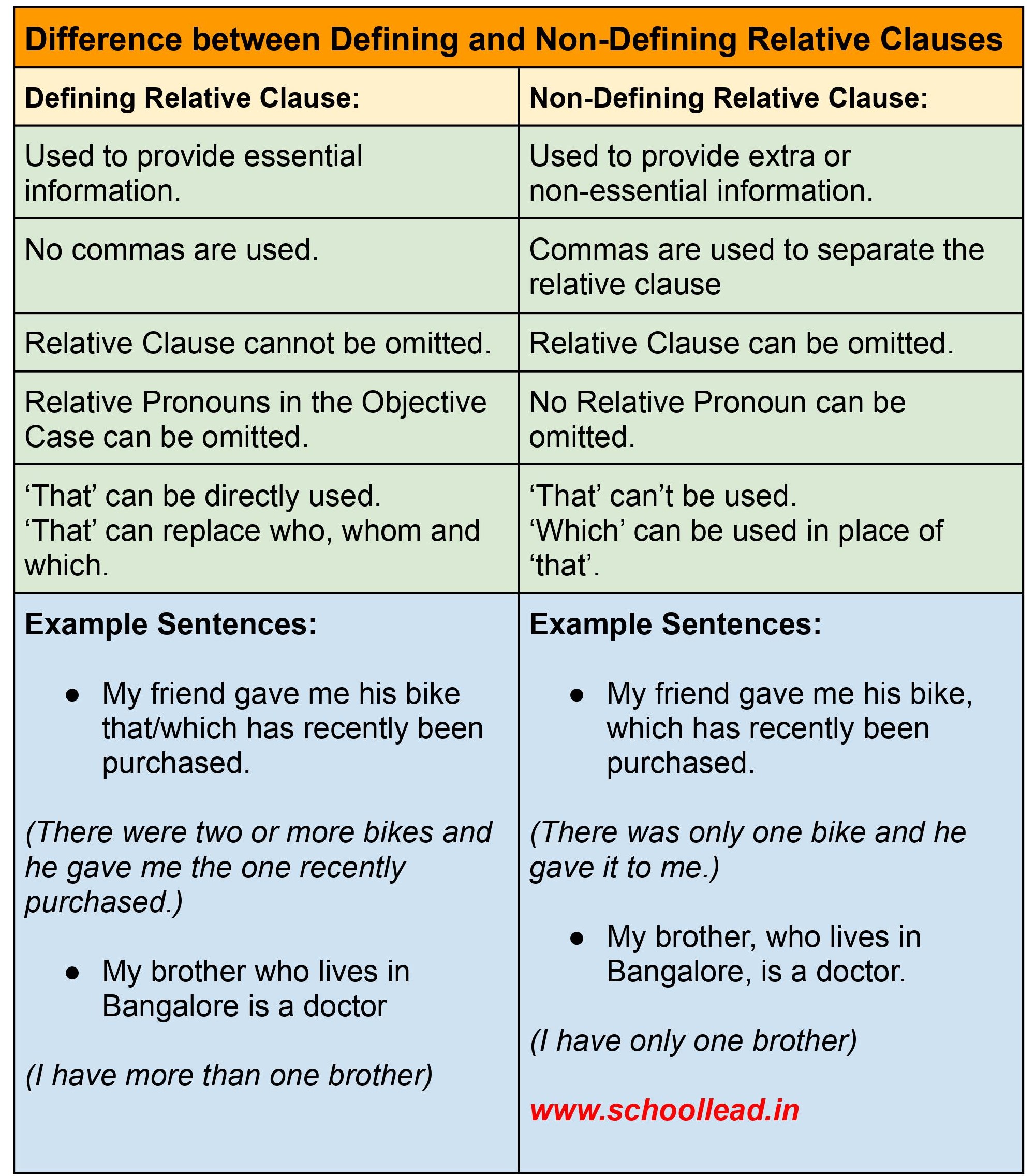
Defining and NonDefining Relative Clauses The Pronoun School Lead
Grammar test 1 Read the explanation to learn more. Grammar explanation Relative clauses give us information about the person or thing mentioned. Non-defining relative clauses give us extra information about someone or something. It isn't essential for understanding who or what we are talking about. My grandfather, who's 87, goes swimming every day.
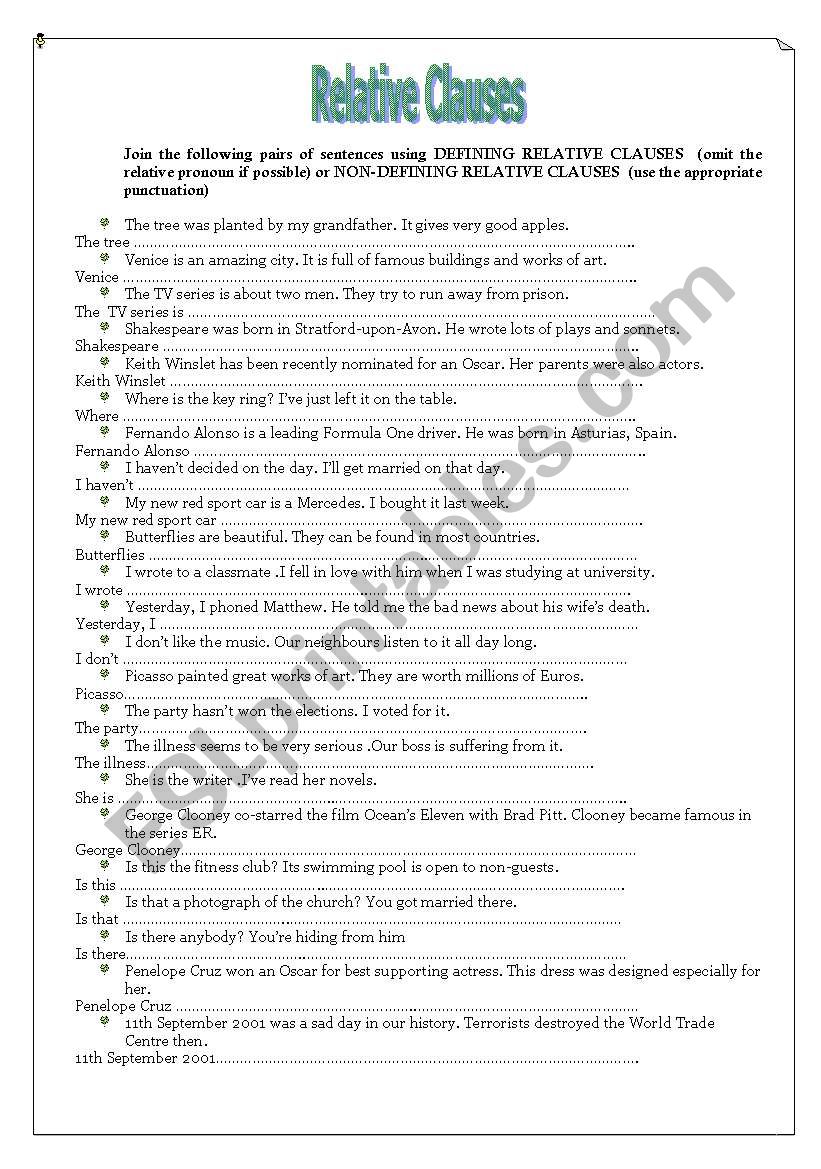
Defining And Non Defining Relative Clauses Exercises Pdf With Answers Online degrees
Other relative pronouns ("which", "who", "whose", "preposition + which", and "whom" if you decide to teach it) can be used in exactly the same way in defining and non-defining relative clauses. This all leaves "that" as the only major difference in pronouns between defining and non-defining relative clauses. However.

the worksheet is shown for students to practice their english language and writing skills
Defining relative clauses exercise 1 Replace 'that' with 'who' or 'which': A soldier is someone that works in the army. A soldier is someone who works in the army. Omitting relative pronouns exercise 2 Complete sentences with 'that' if necessary. If the omission of the relative pronoun is possible, put 'that' in brackets:

Difference Between Defining and Non defining Relative Clauses
Exercises: 1 2 3 Relative clauses - defining, non-defining. Relative pronouns and adverbs. Who, whose, which, that, where. English intermediate grammar exercises.
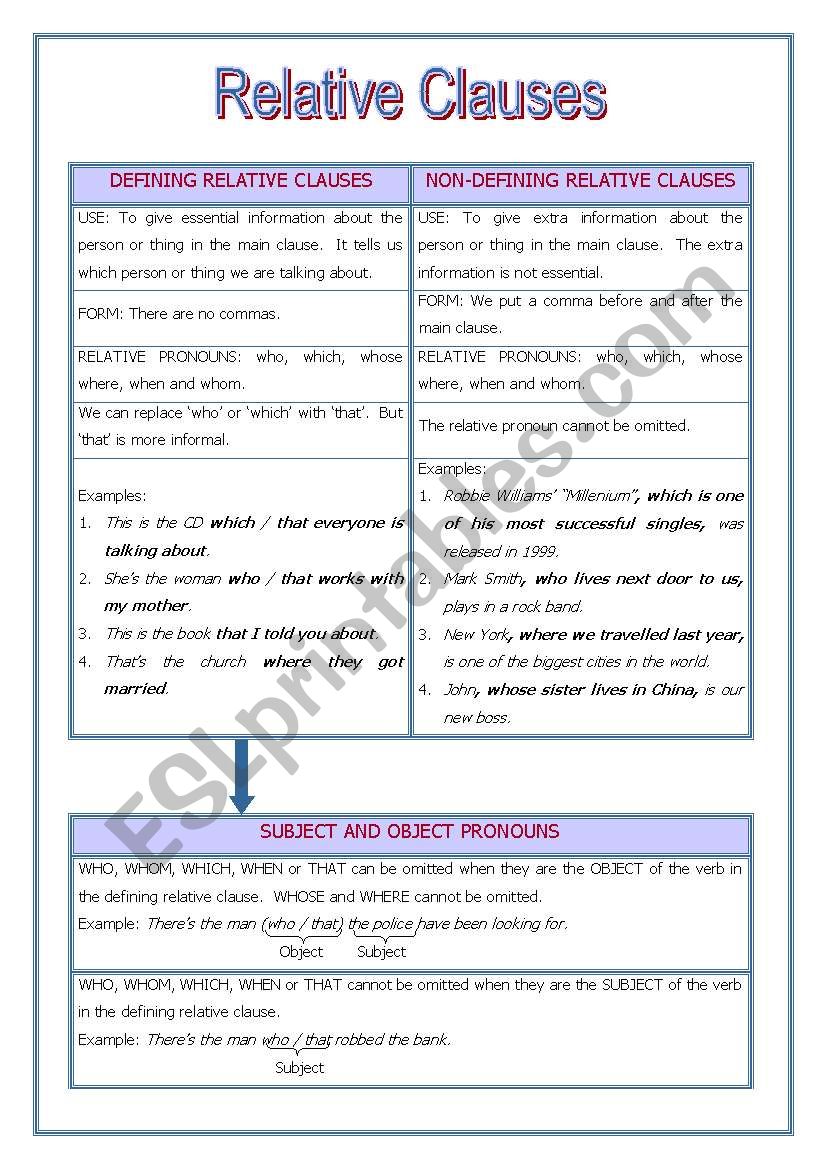
Relative Clauses Defining Examples Relative Clauses Defining Relative Clauses Grammar
A relative clause is a type of clause that contains the element in question, also known as the antecedent, along with a relative pronoun or adverb. The relative clause usually comes immediately after the noun it is describing. Relative clauses can either be defining (restrictive) or non-defining (non-restrictive).

Nondefining relative clauses Relative clauses, Clause, Relative pronouns
A defining (restrictive) clause is one that is essential to the sense of the sentence. My house that has a blue door needs painting. Here the blue door is a defining characteristic, it helps to distinguish that house from my other houses. Defining clauses or phrases are not separated off with commas.

Nondefining relative clauses Relative clauses, Clause, Relative pronouns
Relative clauses allow us to provide additional information without having to start a new sentence. In English, there are two types of relative clauses: defining relative clauses, used without commas, and non-defining clauses which are set off by commas. Learn about defining and non-defining relative clause with Lingolia's grammar lesson.
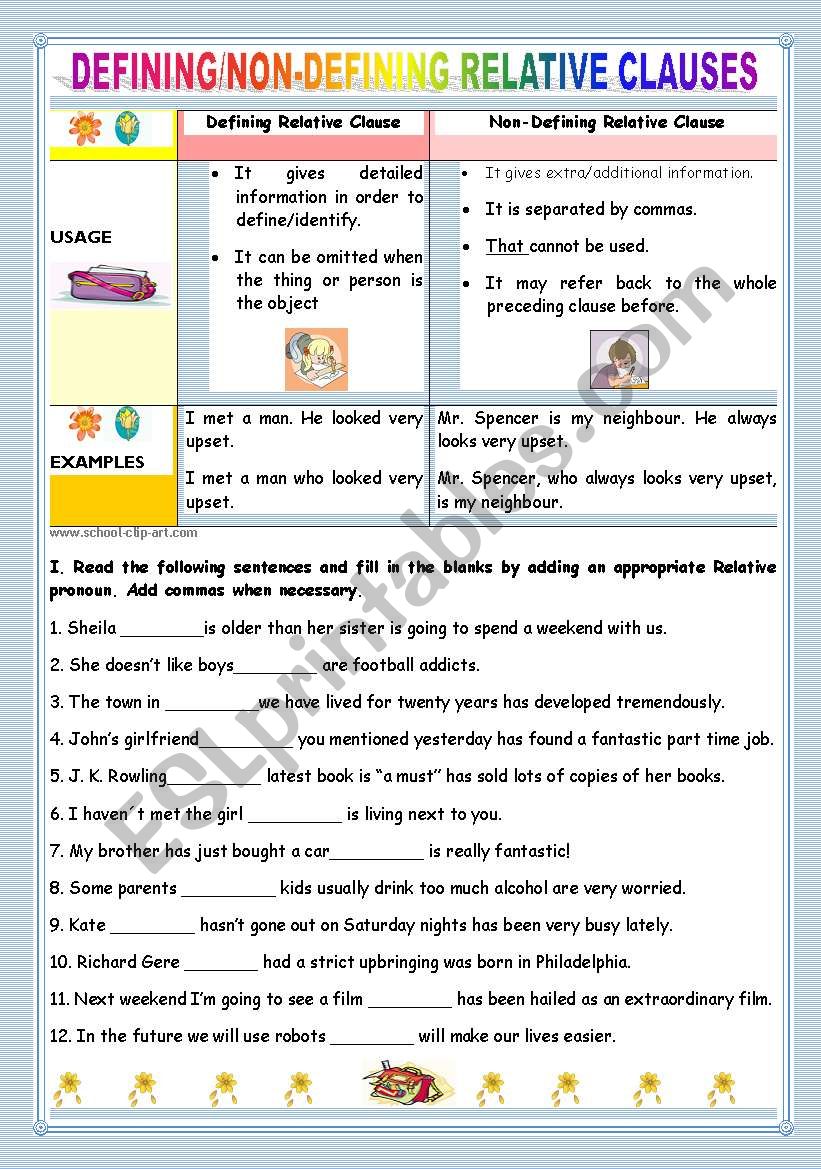
RELATIVE CLAUSES DEFINING/NONDEFINING RELATIVE CLAUSES ESL worksheet by teresapr
In non-defining relative clauses (=between commas), we can use of which/whom after a quantifier such as some, any, none, all, both, several, enough, many and few. Their daughters, both of whom are in university, don't visit them very often. The students, none of whom had failed the exam, were thrilled. Their house was full of cats, most of.
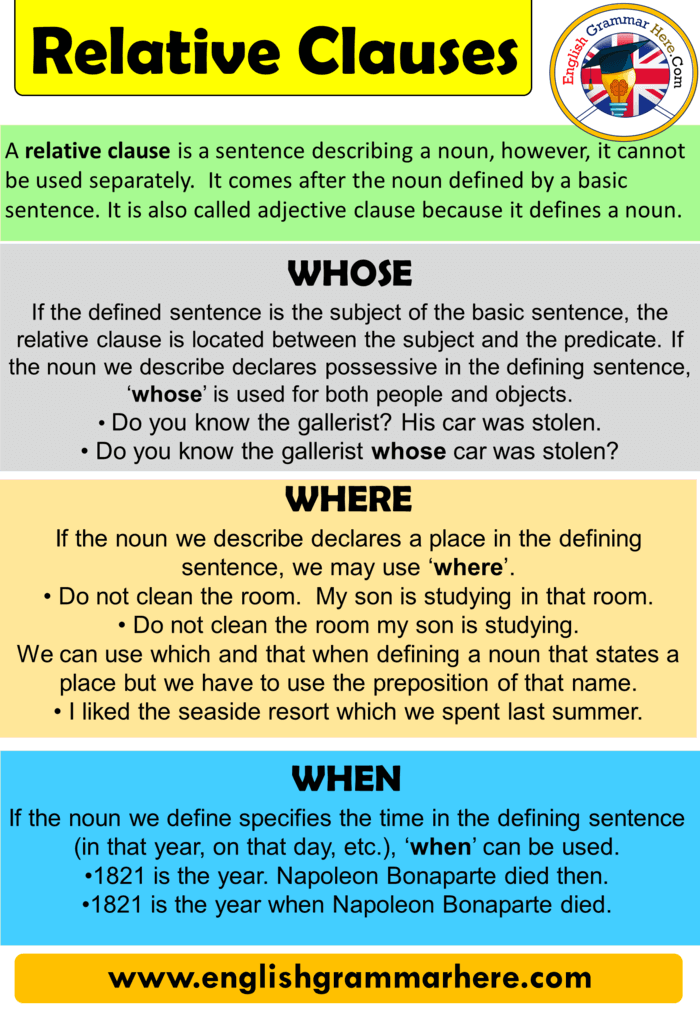
Defining and NonDefining Relative Clauses English Grammar Here
All relative pronouns EXCEPT that can be used in non-defining clauses; however, the pronouns MAY NOT be omitted. Non-defining clauses ARE separated by commas. The table below sums up the use of relative pronouns in non-defining clauses: The writer, who lives in this luxurious mansion, has just published his second novel.
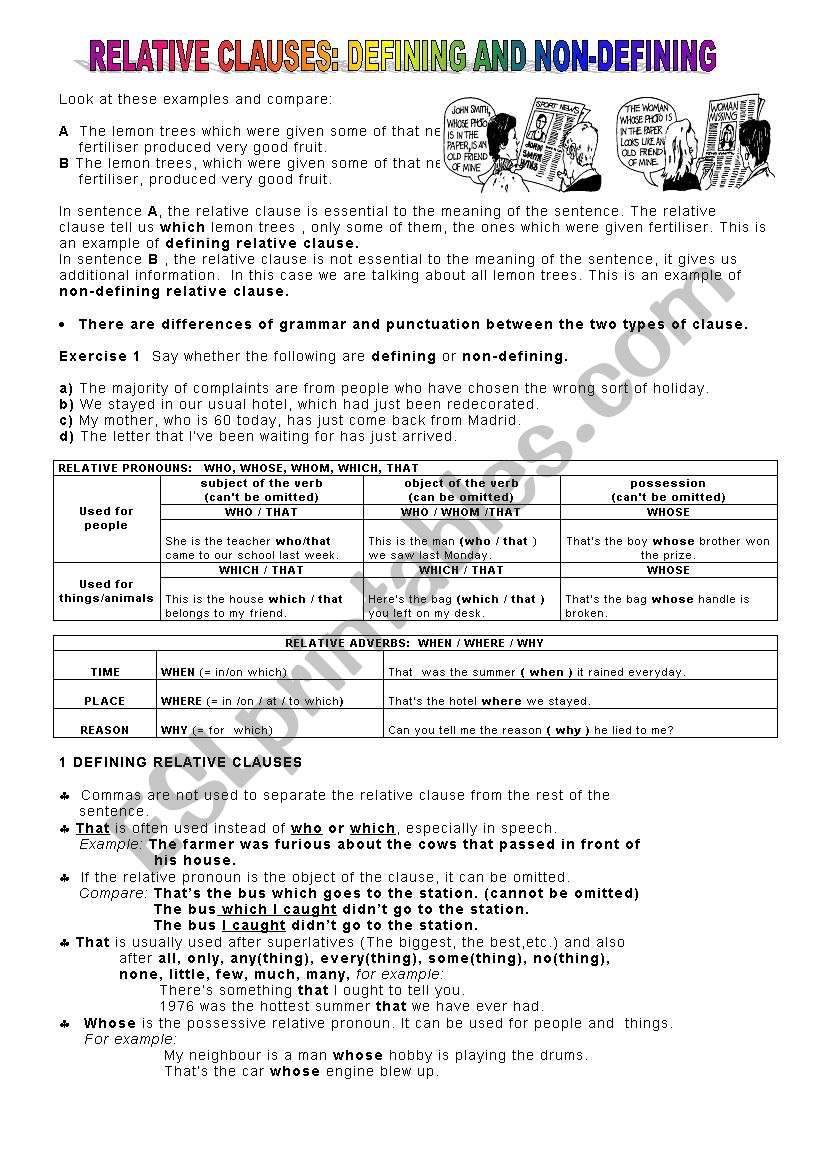
Defining and Nondefining relative clauses ESL worksheet by yogiba61
Unit 3 - Exercise 2 - Non-defining relative clauses. Complete the sentences with whose, who, which, or where.
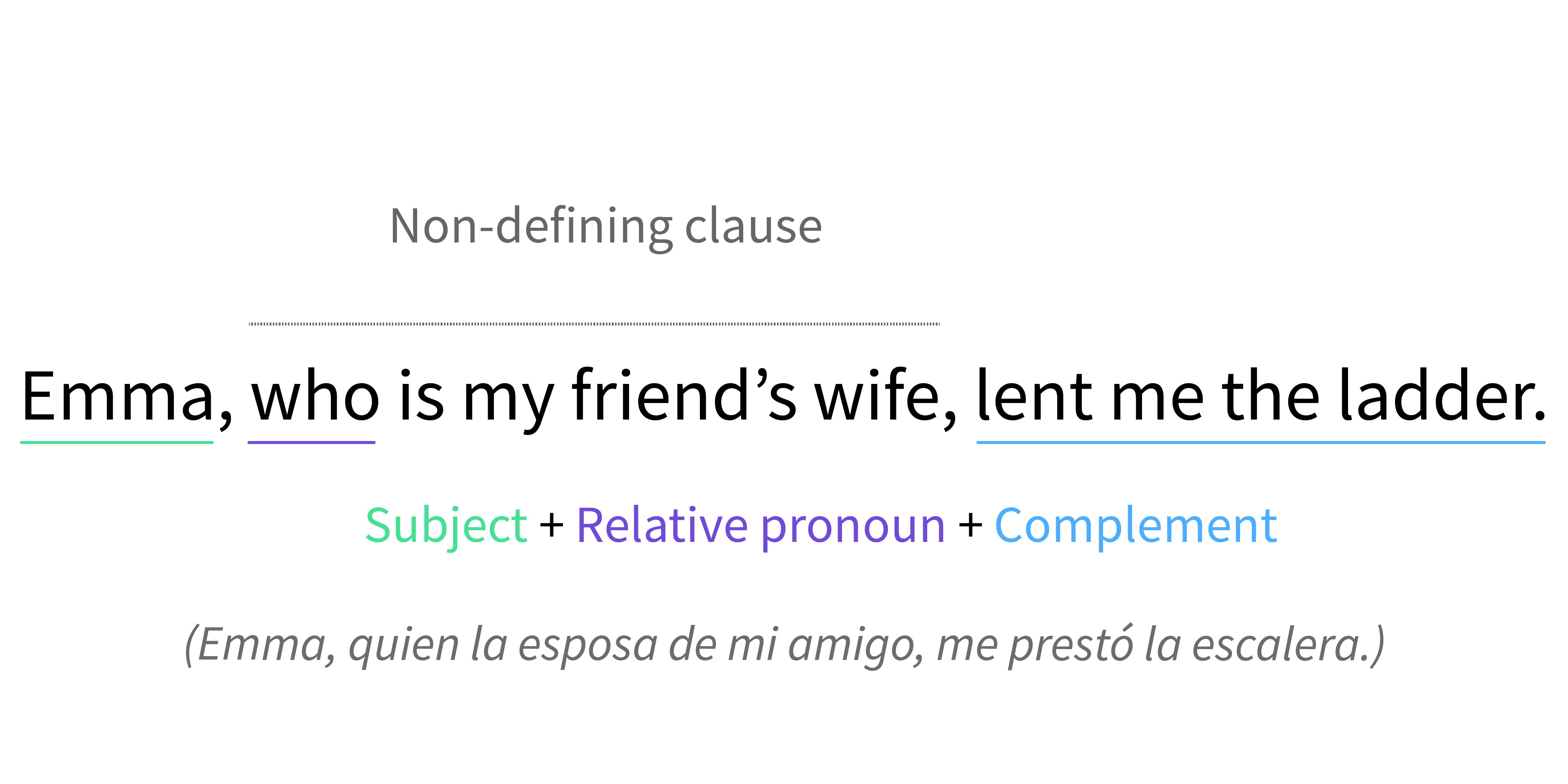
Relative Clauses Defining Examples Relative Clauses Defining Relative Clauses Grammar
Relative clauses Two types: defining relative clauses: give essential information to understand the sentence. We need the relative to understand the sentence. non-defining relative clauses: give EXTRA information. If we remove the relative clause, the sentence still makes sense. Non-defining relative clauses Look at this sentence:

Defining And Non Defining Relative Clauses Examples My XXX Hot Girl
Defining and Non-Defining Relative Clauses. aszalma. 1247. 7. 0. 1/6. Let's do English ESL grammar guide. This six-pages PowerPoing presentation not only explains the difference between defining and non-defining relative clauses b….

Relative Clauses English ESL worksheets pdf & doc
Defining relative clauses - 1 Defining relative clauses - 2 Defining relative clauses - 3 Defining relative clauses - 4 Combine the two sentences 1 Combine the two sentences 2 Relative clauses - sentences Defining relative clauses Defining / non-defining clauses Defining and non-defining relative clauses Defining and non-defining clauses

Defining Relative Clauses Exercise 4 May be freely copied for personal or classroom use
Exercise on Relative Clauses (Contact clauses) Relative clauses - defining or non-defining? Study the situations and then decide whether the following relative clauses are defining or non-defining. defining - no commas non-defining - commas I have three brothers. My brother who lives in Sidney came to see me last month.